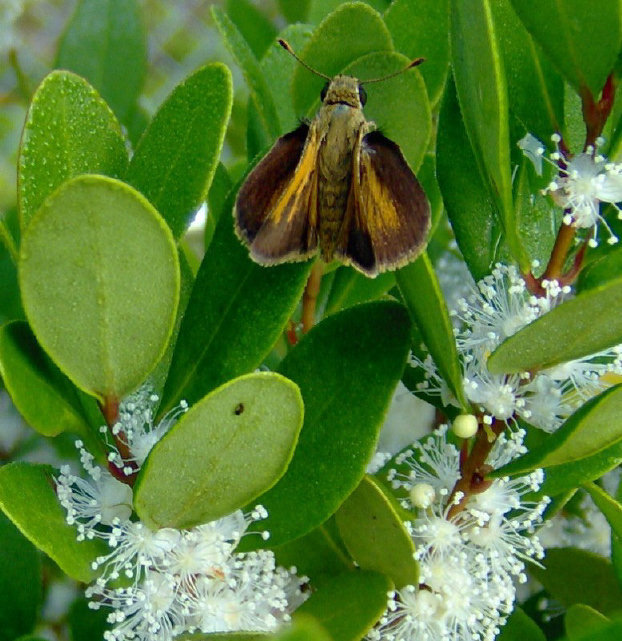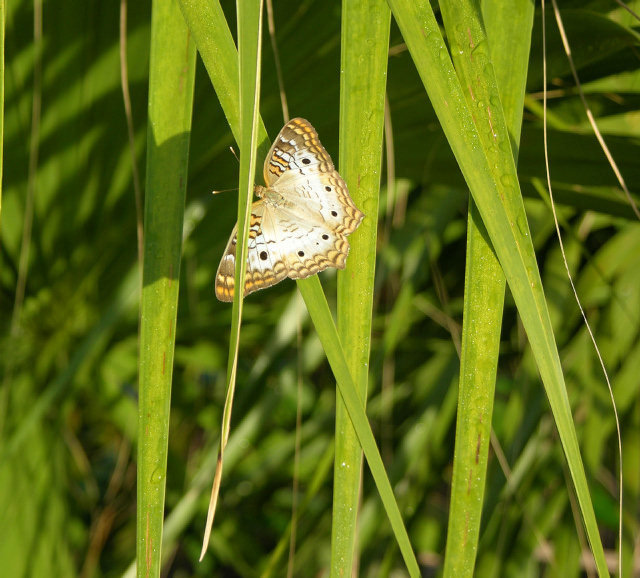Garden as if life depends on it!

As published in the Miami Herald
Have you ever thought about what happens when a native wooded area is cleared for a building site? After the trees and undergrowth have been removed, what happens to the creatures that were living in or visiting this area? The insects that fed on plants growing in the woods are gone. The birds no longer have a reason to look here for food like caterpillars and other insects because their food plants are gone.
When a local habitat is removed, local extinction takes place. All the inhabitants, large and small, leave the area. The plants and animals that were visiting the habitat disappear. This kind of destruction takes place every day.
Through the process of photosynthesis, plants create oxygen. Plants moderate weather patterns and deliver almost all the ecosystems’ services that keep us around. Plants make food and provide shelter for animals that would vanish without them. Because so many ecosystems have been converted into cities, suburbs and agriculture for human needs, both flora and fauna have suffered great losses.
 |
| A Fiery Skipper butterfly perches on a Spanish Stopper. |
Land set aside as natural preserves does not provide enough habitats for healthy ecosystems. We need corridors of native plants to keep sustaining all the animals that depend on them. Often, our yards support very little biodiversity. Our challenge is to raise the carrying capacity of our yards and neighborhoods so that they can be healthy, functioning ecosystems. The carrying capacity depends on plants, the foundations of the food web.
All plants do not support wildlife equally. Exotic plants from foreign countries do not support local diversity. Non-native plants support fewer insects and thus support fewer birds that feed on those insects. Nearly all birds depend on insects, especially caterpillars, to feed to their young. They must nest in areas where such insects are found.
Plants produce distasteful chemicals in their leaves to defend against insects. Some insects have adapted to this and eat specific plants. Most insects can develop and reproduce only on the plant species with which they share an evolutionary history. It takes a long evolutionary exposure to develop the ability to ingest poisonous or distasteful leaves without suffering consequences. For example, monarch butterflies are now able to ingest the dangerous sap of milkweed plants because they have built up defenses to it over time. The downside of this specialization is that they must have access to specific plants in order to survive and reproduce.
 |
| A monarch caterpillar feeds on a milkweed plant. |
So, why should we be concerned about insects? Many mammals depend on insects as a source of food. Nearly all nesting birds feed insects to their babies. Some take as many as 300 caterpillars a day when feeding their young. Predator birds, such as hawks, feed on the smaller birds. Other mammals, such as squirrels, possums, and frogs, also feed on insects. Plants are at the base of the food web: insects feed on them, mammals feed on the insects, and other mammals feed on the insect feeders. We cannot remove insects in the local food web without the web collapsing.
We need to think about our properties in a different way. We need to consider, when designing and planting our landscapes, how we can add to the ecosystem services to ensure the survival of the food web. Plants should not be viewed as mere decorations. Is the solution to plant only native species? Not necessarily, because not all native plants support equal amounts of wildlife. Oaks (Quercus) and Prunus species are two of the top plant genera that support butterflies and moths.
For further information about plants and the numbers of moths and butterflies they support, see http://udel.edu/~dtallamy/host/index.html.
 |
| A White Peacock butterfly lands on a palm frond. |
To share our neighborhoods with wildlife we need to:
• Create corridors of appropriate plants connecting natural areas.
• Reduce the size of our lawns — essentially worthless ecosystems.
• Begin the transition from non-native, exotic ornamental plants to native ornamentals.
It is a design challenge of our time, especially in South Florida. Canopy and sub-canopy trees, a shrub layer and ground covers using native plant material will help create a healthy food web in our yards and neighborhoods. Planting natives is a grassroots approach to conservation in our own yards and is something we can all do. The ways in which we garden and landscape are going to determine what life looks like in the future. Garden as if life depends on it.
This article is based on a lecture by University of Delaware professor Dr. Doug Tallamy, author of “Bringing Nature Home.”
Mary Collins is Senior Horticulturist at Fairchild Tropical Botanic Garden
